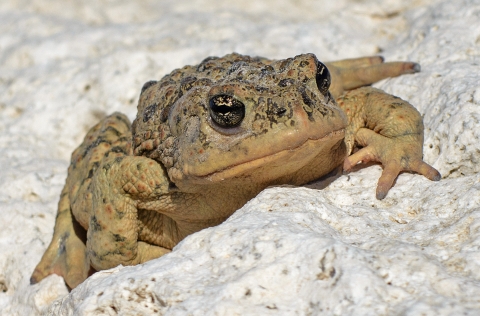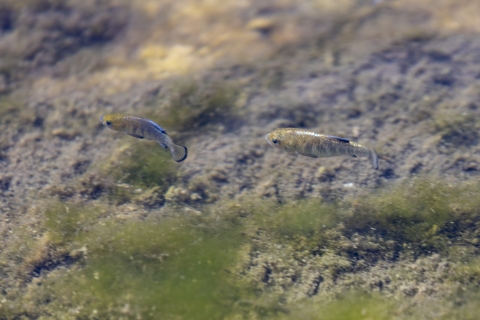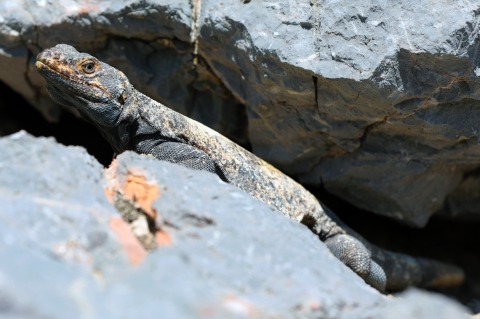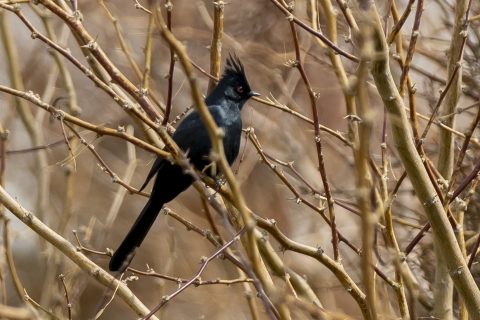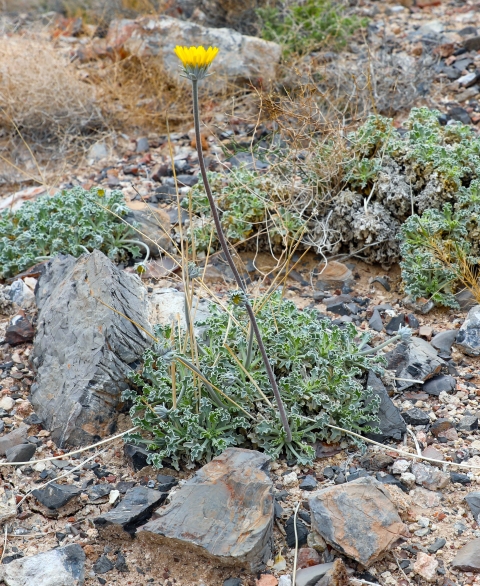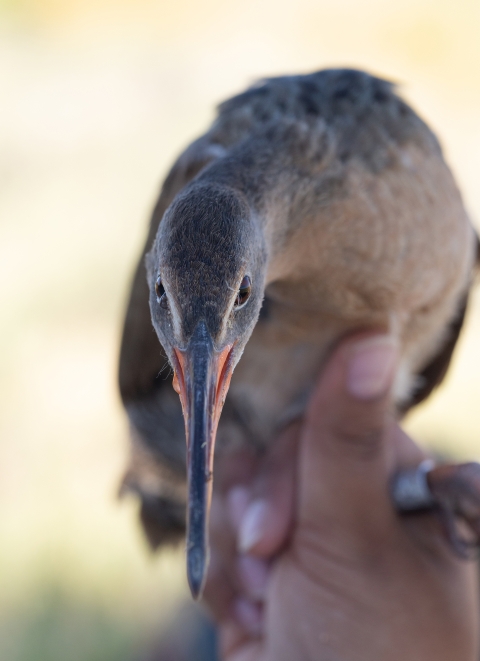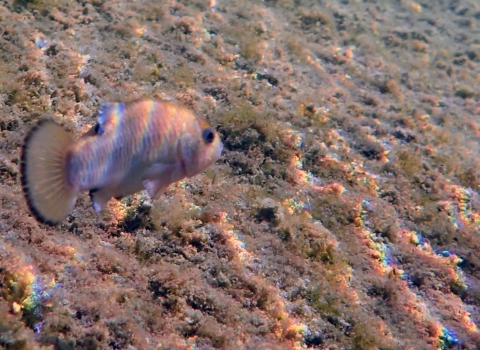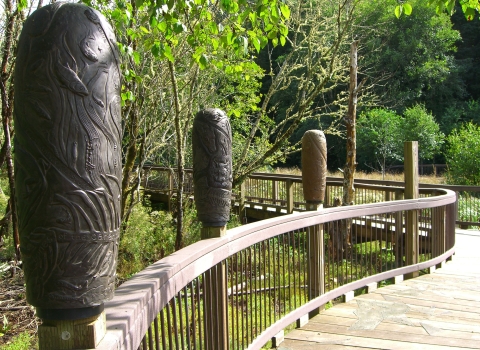Ash Meadows National Wildlife Refuge is located in the Mojave Desert, just outside of Pahrump, Nevada. This unique desert oasis is just under 24,000 acres and is home to 26 species that can be found nowhere else on Earth. Ash Meadows was named after the ash trees that once occupied the area as described in expedition notes from 1893. Another fun fact is that the water that emerges at Ash Meadows is in transit underground for hundreds or thousands of years before reaching the refuge and it circulates deeply enough in the Earth to warm considerably.
Below are a few species that are endemic to Ash Meadows and a few that are more common, but interesting.
A toad in the Genus anaxyrus
The toads on Ash Meadows are difficult to accurately identify due to being in an overlap range with some genetic crossbreeding happening. But this one closely resembles a Woodhouse's toad, which is a robust amphibian and can grow to a maximum length of five inches. The head has prominent cranial crests in front of and in between the eyes. The dorsal surface of this toad is grayish-brown or yellowish-brown and it is speckled with small dark spots. The belly is rather paler and is usually unspotted.
A fun fact about Woodhouse’s toad is the male’s call resembles the bleat of a sheep and lasts from one to three seconds. Imagine being a sheep herder looking for your flock and stumble upon a bunch of toads.
Ash Meadows speckled dace
The Ash Meadows speckled dace occurs in spring systems and aquatic habitats formed by the spring waters. It is known to occur in headwater spring pools, spring outflow creeks and marshes formed by the spring flows, seeming to favor areas with swift flow in each habitat type.
Dace populations and suitable habitat have been severely reduced by agricultural and residential development and groundwater pumping. Ash Meadows speckled dace are presently found only in a small fraction of their historic range.
Desert Bighorn Sheep
Much as the bison did for Native American tribes in the Great Plains, bighorn sheep were sources of food, clothing and tools for tribes in the mountainous regions of the west. Petroglyphs featuring bighorns are among the most common images across all western U.S. states.
Bighorn sheep are named for the large, curved horns borne by the rams (males). A pair of horns might weigh up to 30 lb, while the sheep typically weigh up to 315 lb. Ewes (females) also have horns, but they are shorter with less curvature. They range in color from light brown to grayish or dark, chocolate brown, with a white rump and lining on the backs of all four legs.
A couple of fun facts about bighorn sheep are their horn size is a symbol of rank, they can live up to 15 years in the wild and bighorns typically swallow their food, regurgitate it later, then chew it up more before swallowing it again.
Ash Meadows Amargosa pupfish
The Ash Meadows Amargosa pupfish is endemic to many of the springs and associated marsh habitats of Ash Meadows NWR and adjacent lands. This species is quite adaptable, able to thrive in habitats ranging from large spring pools to small seeps and seasonal marshes.
The pupfish are named “pup” after puppies, due to their playful behavior.
Chuckwalla
Chuckwallas usually eat early in the morning and spend the rest of the day sunbathing. Basking in the sun increases their body temperature giving them energy to complete daily activities. Chuckwallas are primarily plant eaters, consuming fruit, leaves and desert flowers, but will eat insects if food is scarce. Chuckwallas are the second largest lizard in the United States.
A fun fact about chuckwallas is like many lizards, chuckwallas are capable of autotomy, where they have the ability to drop and then re-grow their tail if necessary to escape predators. The wiggling tail is left behind to distract the predator as the lizard makes a getaway.
If you look closely in the picture, you can see this chuckwalla has left a decoy tail behind.
Phainopepla
The Phainopepla is a brilliant sight in flight. Males are silky black and slender, with a crest and bold white wing patches that appear when the bird takes flight. Females are similar but a subdued gray. These glossy birds occur in desert washes, where they eat mainly mistletoe berries, and in oak and sycamore woodlands of California and Arizona. They often perch high in shrubs and catch insects on the wing.
A fun fact about them is the name "Phainopepla" comes from the Greek for "shining robe," a fitting characterization of the shiny, jet-black plumage of the adult male.
Ash Meadows naucorid
The Ash Meadows naucorid is a rare insect in the creeping water bugs family. This tiny water bug (about the size a ballpoint pen tip) is a voracious predator within the aquatic food web. It is endemic to Ash Meadows in Nye County, Nevada, where it is now restricted to one system of springs. It is a federally listed threatened species of the United States.
Ash Meadows Sunray
The Ash Meadows sunray is a perennial herb that grows in clumps of long, wiry stems. The leaves are gathered close to the ground around the base of the plant. A single flower head adorns the leafless stalks. At the end of the twentieth century, there were no current population figures for the sunray, although, as of 1990, the flower was believed to be the most abundant and widespread of all plant species endemic to Ash Meadows. Designated critical habitat for this plant consists of about 1,700 acres in Nye County, mostly within Ash Meadows NWR.
Yuma Ridgeway’s rail
A marsh bird the size of a chicken, the Yuma Ridgway's rail is gray-brown above and buffy-cinnamon below, mottled brown or gray on its rump and has brownish-gray cheeks and flanks barred with black and white. Its orange bill is long, slender and slightly down-curved. The Yuma Ridgway's rail is a water bird with long legs and a short tail.

